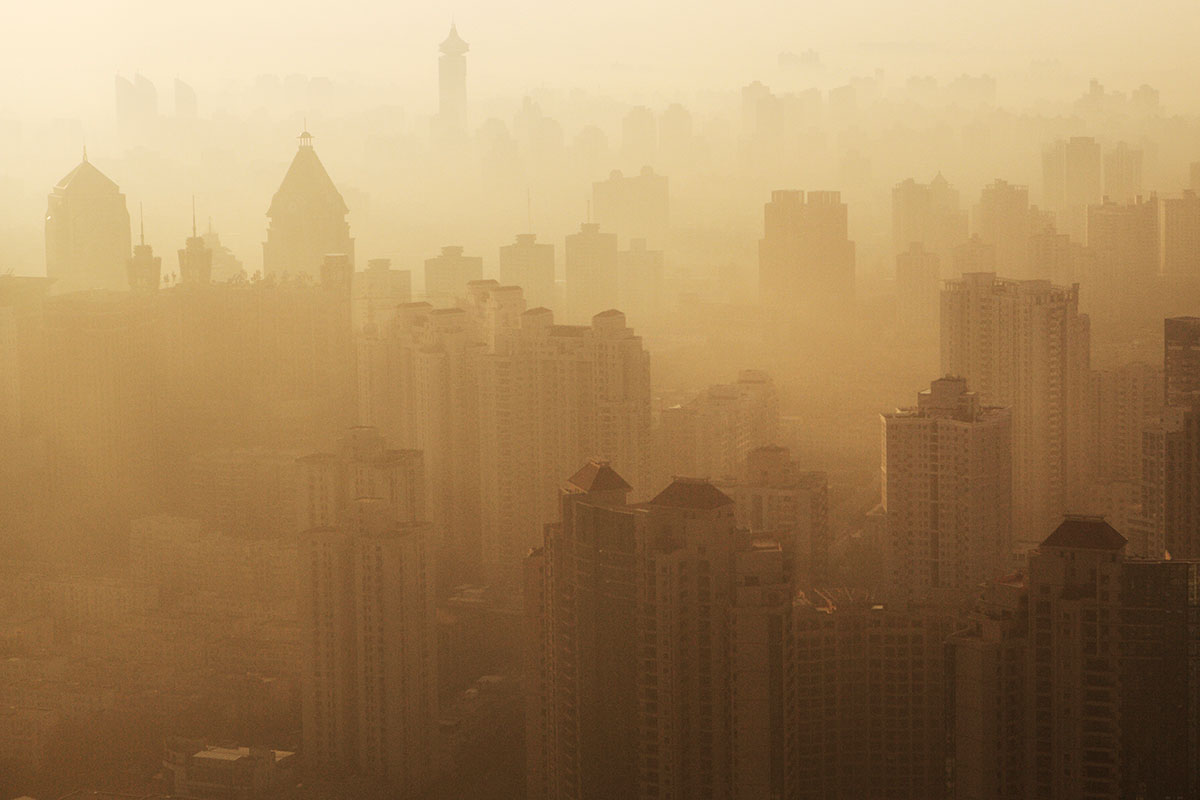As a society, we’ve come a long way from our horse-and-buggy days. Automated cars carry us from place to place, and we have electric bulbs coating our ceilings that turn the night back into day. However, all of these groundbreaking inventions have had unforeseeable external effects on our environments and on ourselves. Air pollution composed of the notorious chemicals have turned out productive cities to smoky havens, and many people have died as a result of inhaling this toxic mixture. “Smog-eating” building materials and laundry detergent that turns your clothes into smog-converting machines have the potential to change the way that smog is reduced in high-risk areas.

To analyze the potential effects of these green inventions, it’s important to understand what smog is. Smog, a term created back in the 1900’s to describe the thick smoke that was discharged from coal-burning, is mixture of easily evaporated organic compounds and nitrogen oxides. Because modern-day society has become less dependent on coal, this smog is now referred to as photochemical smog since it is created when sunlight comes into contact with these reactive materials. Though the most efficient way to combat the pollution problem is to simply reduce the amount of air pollution you discharge through more conservative uses of vehicles and electricity, new inventions are attempting to combat the pollution problem in a way that doesn’t impinge on the habits of society.
An architecture firm by the name of Elegant Embellishments has created a way to merge architecture, art, and environmental efforts through the creation of white tiles that clean the air. According to The Smithsonian, these tiles, when attached to fixed structures, can react with a little bit of sunlight to convert the nitrogen oxides into calcium nitrate, water, and carbon dioxide. This material is also regenerative, meaning that it continues to take part in this converting process forever. A building called the Torre de Especialidades located in Mexico City, a place that has some of the worst pollution problems in the world, has this technology implemented on its structure and combats the emissions of 1,000 cars a day. Even buildings in Italy are utilizing the artistic approach to combat the pollution problem seen globally.

The idea to turn green technology into art is revolutionary considering that some people detest solar panels and wind turbines due to the look that they give the natural landscape. If this design was incorporated into the design of all newly-created buildings and renovations, we would raise a new generation of people to accept this interesting-looking design as a commonplace.
However, buildings become shaded during certain parts of the day, and this technology isn’t the most effective approach to the problem. So, a research group base in London created a laundry detergent that turns your clothes into smog-converting devices. According to Take Part, the detergent contains small particles of titanium dioxide that attracts smog pollutants, discharging a safe by-product. This solution can be used by virtually anyone who has access to and can afford the product. Researchers even estimate that the clothing can convert 0.5 grams of nitrious oxide within the reference frame that cars produce 0.017 grams of this chemical per mile.

Even though this technology also isn’t ultra-efficient, it is important to note that when humans walk around, they stir up microscopic bits of air pollution that can be converted by the material. So even if you aren’t outside all day playing sports, you can still help to combat the pollution problem. These invention truly have the potential to change the way be reform the toxic chemicals in the air that we breathe everyday. Imagine if every person if all the detergent companies in China and around the world decided to add this formula to their product. The world would become a much eco-friendly place if this finding was implemented on a large scale, and if the researchers who discovered this finding licensed the formula to these companies, the invention might hit shelves globally sooner rather than later.
With these inventions in mind, I have faith in our society that we will fix the problems that we all actively contribute to in a timely manner. After all, who would have ever thought that solar panels and wind turbines would pop up on houses and in fields in America and around the world?
Jamie, this is so cool! I’ve never heard about either of these inventions, though it seems like they should be everywhere by now. I liked the fact that you were able to explain the architecture and detergent solutions with clarity, keeping it simple for readers like myself that aren’t very well versed in the actual chemical process of it all. This post gave me hope that smog will soon be an idea of the past.
Jamie – what a great post! I love how you smoothly transitioned from explaining the issue in layman terms into describing the innovative smog-combating architecture and fabric. As someone who has lived in extremely polluted areas, this post really hits home, and I think you did a wonderful job!
These inventions are SO COOL! As engineering majors, it’s even cooler to be thinking about what we could design to accomplish similar goals in unconventional ways. This is by far so inspiring and amazing. Now I want to look up these companies and support them with my business.. or even get a job with them four years from now 😉
Ur mum Spammy shrieks mum